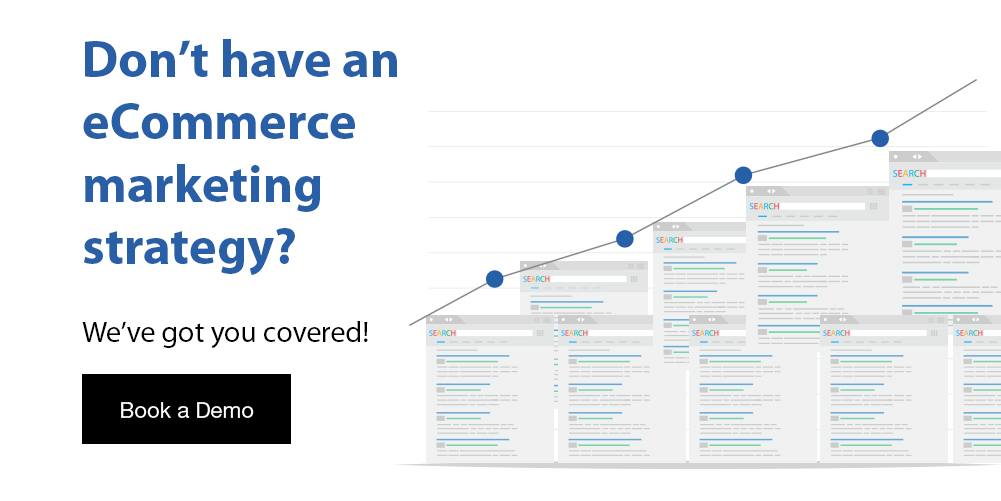These days, when you place an order for a product, you likely expect to receive it within a few days. In the past, it was common for customers to wait weeks or even months to receive their deliveries. However, with the rise of the eCommerce environment, businesses such as Amazon, and distributed warehousing, shipping speeds, and deliveries have improved.
It’s common for customers to expect quick deliveries which is why many businesses are starting to use the distributed warehousing model. In other words, they’re using smaller-scale warehouses in different locations that allow them to improve business efficiency, increase order fulfillment speed, provide better customer service, and reduce costs.
As an eCommerce business, you may be wondering if the distributed warehousing model is right for you compared to centralized inventory warehousing. This blog post covers three reasons why you should consider it.

Distributed Warehousing Meaning
The meaning of distributed warehousing refers to a way that businesses can fulfill, ship, and distribute customer orders from multiple smaller and strategically located warehouses across the country. The goal of distributed warehousing is to be able to access the benefits of inventory storage and order fulfillment from nearby locations.
This model also offers customers shorter shipping times and cheaper delivery costs, especially when it comes to expedited shipping and delivery options such as overnight shipping. With distributed warehousing, the warehouses perform multiple functions including inventory storage, order fulfillment, retail distribution, cross-docking, and on-site coworking.
Deciding whether you should use centralized or decentralized warehousing for your product distribution strategy will depend on your business requirements, industry, and growth plans. With centralized inventory, you will likely have low operation costs, better inventory control, low inbound costs, and quality customer service.
However, centralized inventory may lead to high shipping costs for outbound shipments and increased shipping timelines. This is because your business will only be fulfilling orders from a single location.
Distributed or decentralized warehousing makes it possible for businesses to fulfill, ship, and distribute inventory from multiple warehouses. This way, businesses can locate products that are closest to their end customers and ship them from that location. As a result, they will decrease the cost and time of delivery.
Key Takeaway: Distributed warehousing provides businesses with the opportunity to meet quick shipping demands from customers at lower costs for fulfillment. Small eCommerce businesses may consider partnering with 3PL companies to take advantage of distributed warehousing options without hurting their bottom line.
3 Reasons eCommerce Businesses Utilize Distributed Warehousing
As a business grows and expands geographically, it can become difficult to manage the many aspects of the supply chain. This includes the food supply chain if you have a business within the restaurant industry.

For eCommerce businesses, packages might have to pass through complicated routes in order to reach the end customer. However, with the use of distributed warehousing, this process can be improved.
1. Fewer Shipping and Fulfillment Costs
The speed and cost of delivery are important for the business and the customer. Nowadays, customers are more likely to expect free shipping from brands, especially if they’re part of their loyalty program.
In many cases, shipping costs are based on the shipping distance. By locating warehouses closer to the customer, a business can reduce its average shipping costs.
2. Faster Shipping
When offered, customers are inclined to choose faster delivery options. As a result, offering such options is important for customer acquisition and customer retention.
If a business is shipping orders from a single warehouse, it’s likely the shipping will take longer. With distributed warehousing, orders can be shipped faster because they will be fulfilled from the destination closest to the end customer.
These processes reduce the average distance orders travel and, in turn, shorten delivery times. This way, businesses can offer expedited delivery options without it costing so much.
3. Shorter Supply Chain
It’s possible to shorten the supply chain when you fulfill orders locally. This is also how eCommerce businesses can reduce transportation costs and risks, provide quick order fulfillment, and ensure the quality of perishable items. This is important for eCommerce businesses in the restaurant industry and those worried about food safety.
Shorter supply chains also allow businesses to offer same-day delivery services. It’s a sustainable business idea because it reduces transportation costs, and CO2 emissions, and decreases the environmental impact.
Different Warehousing Models
Choosing the right business warehousing model will depend on numerous factors. Some factors include how quickly you want to scale, the size of your inventory, your available capital, the lifespan of your inventory, and customer locations.
Here are different warehousing model options to consider:
On-demand Distributed Warehousing
The on-demand distributed warehousing model makes it possible to stock SKUs in locations near your customers without overspending on warehouse facilities. With this approach, businesses partner with companies that connect them to warehouses with extra storage space that they can use for their inventory.
This model is ideal for businesses with specific storage locations in mind. However, it’s generally not a long-term solution for growing businesses because permanent storage locations are not always guaranteed. On-demand distributed warehousing also lacks visibility as to what is going on within your warehouse space.
Centralized In-House Warehousing
It’s common for new eCommerce businesses to buy or rent a centrally-located warehouse through which they manage their own operations. This is a traditional warehousing model that is ideal for the short term, but it is not scalable or flexible.
When you look to grow your business, you will have to spend the time and effort to locate and set up new storage locations. The centralized in-house warehousing model requires capital for long-term leases, and it also attracts high fixed operating costs.
Due to the warehouses being centrally located, most shipments will likely travel longer distances which will cause slower order fulfillment times. However, this model provides businesses with complete control over their inventory, warehouse operations, and quality control.
3PL Outsourcing
As a growing business, you may want to consider outsourcing your warehouse processes to a warehousing company or a 3PL service provider. This is because these companies and providers have networks of fulfillment centers that your business can benefit from.
An ideal way to streamline fulfillment is with 3PL outsourcing. It provides businesses with the benefits of distributed warehousing, but it doesn’t have many of the drawbacks of this model.
A business will commit to storage, order fulfillment, and shipping fees, but get access to a wide network of locations without having to rent, buy, or invest in those locations. 3PLs also provide value add-ons including software and technology that allows for SKU management, streamlined order processing, and fulfillment.
Cross Docking
If your business has a lot of channels and storage isn’t a big requirement, cross-docking may be the ideal model. In cross-docking warehouses, incoming merchandise is unloaded off of delivery vehicles and loaded right into outbound vehicles. This saves on time, storage costs, and warehousing space.

Frequently Asked Questions About Distributed Warehousing
The distributed warehousing approach is one many eCommerce businesses should consider. It allows businesses to operate multiple fulfillment and distribution centers to reduce shipping costs and shipping times, and meet customer expectations.
Here are a few commonly asked questions regarding distributed warehousing:
What Does Distributed Warehousing Mean?
The meaning of distributed warehousing refers to an approach where businesses fulfill, ship, and distribute inventory from small and strategically located warehouses around the country. This is an ideal approach for businesses that want to decrease shipping times and costs.
What Are the 4 Types of Warehouses & Distribution Centers?
The four types of warehouses and distribution centers include:
- On-demand distributed warehousing
- Centralized in-house warehousing
- 3PL
- Cross-docking
These can oftentimes be managed through a warehouse control system.
What Is Warehousing and Distribution?
Warehousing is the process that involves storing inventory in warehouses, fulfilling customer orders, and shipping them to end customers. Distribution, on the other hand, refers to the logistical allocation of inventory across multiple channels and locations.